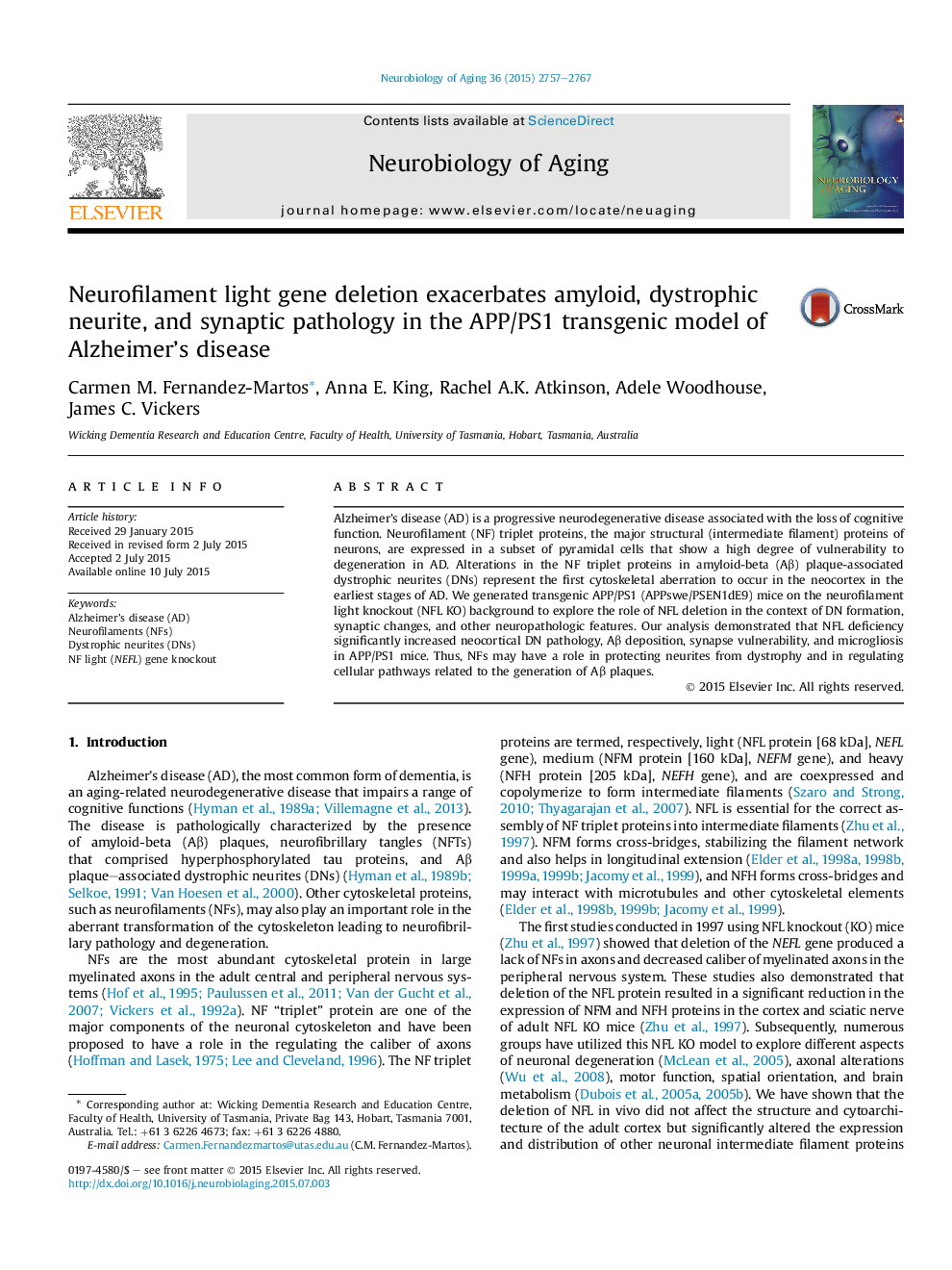| Article ID | Journal | Published Year | Pages | File Type |
|---|---|---|---|---|
| 6803872 | Neurobiology of Aging | 2015 | 11 Pages |
Abstract
Alzheimer's disease (AD) is a progressive neurodegenerative disease associated with the loss of cognitive function. Neurofilament (NF) triplet proteins, the major structural (intermediate filament) proteins of neurons, are expressed in a subset of pyramidal cells that show a high degree of vulnerability to degeneration in AD. Alterations in the NF triplet proteins in amyloid-beta (Aβ) plaque-associated dystrophic neurites (DNs) represent the first cytoskeletal aberration to occur in the neocortex in the earliest stages of AD. We generated transgenic APP/PS1 (APPswe/PSEN1dE9) mice on the neurofilament light knockout (NFL KO) background to explore the role of NFL deletion in the context of DN formation, synaptic changes, and other neuropathologic features. Our analysis demonstrated that NFL deficiency significantly increased neocortical DN pathology, Aβ deposition, synapse vulnerability, and microgliosis in APP/PS1 mice. Thus, NFs may have a role in protecting neurites from dystrophy and in regulating cellular pathways related to the generation of Aβ plaques.
Keywords
Related Topics
Life Sciences
Biochemistry, Genetics and Molecular Biology
Ageing
Authors
Carmen M. Fernandez-Martos, Anna E. King, Rachel A.K. Atkinson, Adele Woodhouse, James C. Vickers,
